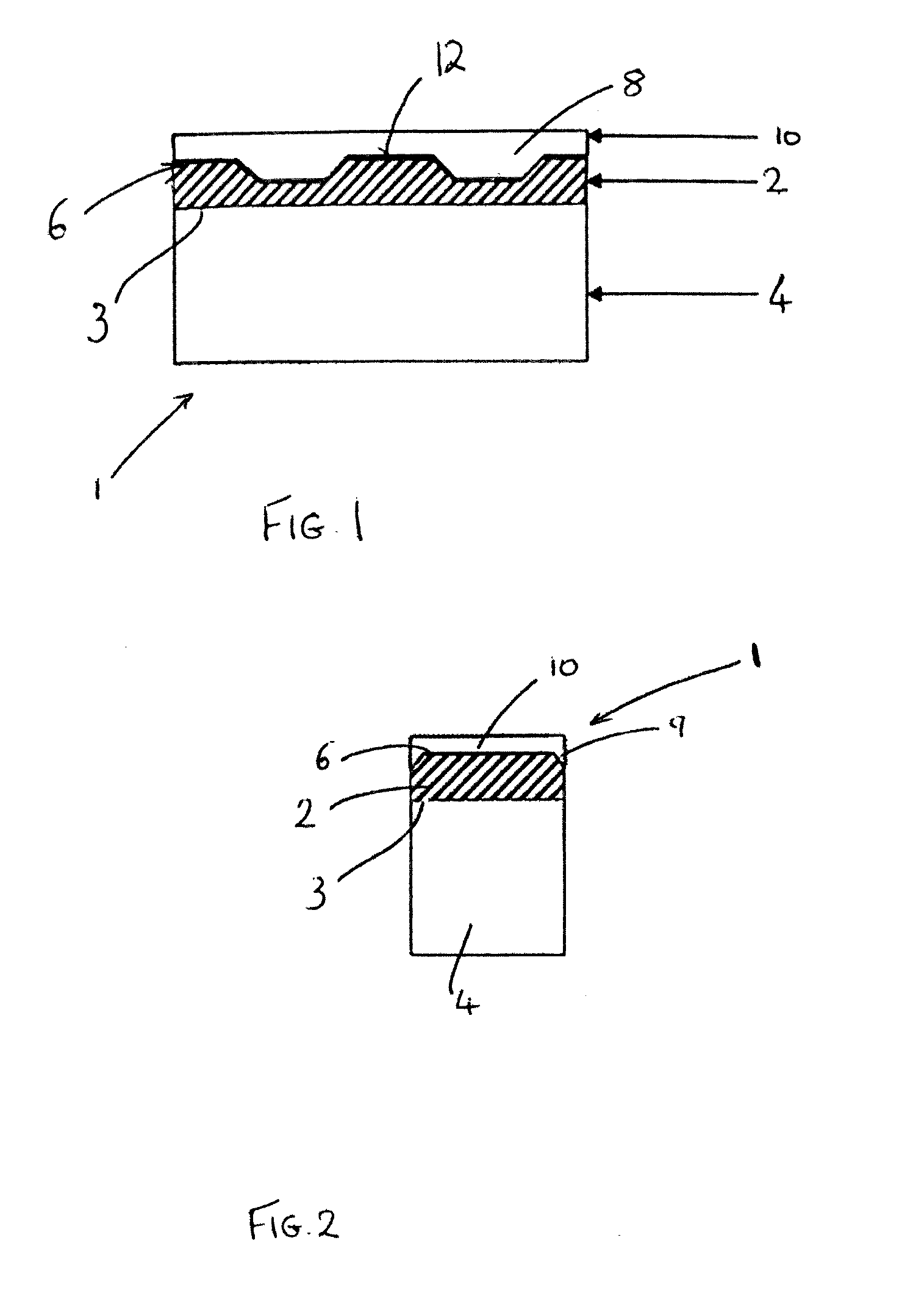Polycrystalline superhard material and method for making same
- Summary
- Abstract
- Description
- Claims
- Application Information
AI Technical Summary
Benefits of technology
Problems solved by technology
Method used
Image
Examples
example 1
[0048]A surface topology configuration may be designed according to the requirements of a given drilling or machining application and having regard to the intended shape of a cutter structure or machine tool insert. A cobalt-cemented carbide substrate body may be provided and a ceramic plug may be provided, the ceramic plug having a surface comprising a surface topology that is complementary (i.e. inverse) to that of the desired surface topology for the cutter or machine tool insert. A pre-compact assembly may be prepared by forming a plurality of diamond grains into an aggregation against the surface of the substrate, and encapsulating the assembly within a jacket, formed for example of alumina or other ceramic material. The surface of the ceramic plug having the desired surface topology to be imparted to the diamond body on sintering is placed in contact with the diamond grains, as shown in FIGS. 1 and 2. The diamond grains may have a mean size of at least about 1 micron and at mo...
example 2
[0049]A surface topology configuration may be designed according to the requirements of a given machining application and having regard to the intended shape of a machine tool insert. A ceramic body may be provided, having a surface comprising a surface topology that is complementary (i.e. inverse) to that of the desired surface topology for the superhard material. A pre-compact assembly may be prepared by forming a plurality of cubic boron nitride (cBN) grains into an aggregation against the surface of a pre-formed substrate, and encapsulating the assembly within a jacket formed for example of a ceramic material such as alumina. The surface of the ceramic plug having the desired surface topology to be imparted to the body on sintering is placed in contact with the cubic boron nitride (cBN) grains, as shown in FIGS. 1 and 2. The aggregation may also include a blend of powders comprising 86 weight % cBN grains and a binder material comprising 70.0 weight % Al, 11.7 weight % Co and 18...
PUM
| Property | Measurement | Unit |
|---|---|---|
| Thickness | aaaaa | aaaaa |
| Thickness | aaaaa | aaaaa |
| Thickness | aaaaa | aaaaa |
Abstract
Description
Claims
Application Information
 Login to View More
Login to View More - Generate Ideas
- Intellectual Property
- Life Sciences
- Materials
- Tech Scout
- Unparalleled Data Quality
- Higher Quality Content
- 60% Fewer Hallucinations
Browse by: Latest US Patents, China's latest patents, Technical Efficacy Thesaurus, Application Domain, Technology Topic, Popular Technical Reports.
© 2025 PatSnap. All rights reserved.Legal|Privacy policy|Modern Slavery Act Transparency Statement|Sitemap|About US| Contact US: help@patsnap.com


